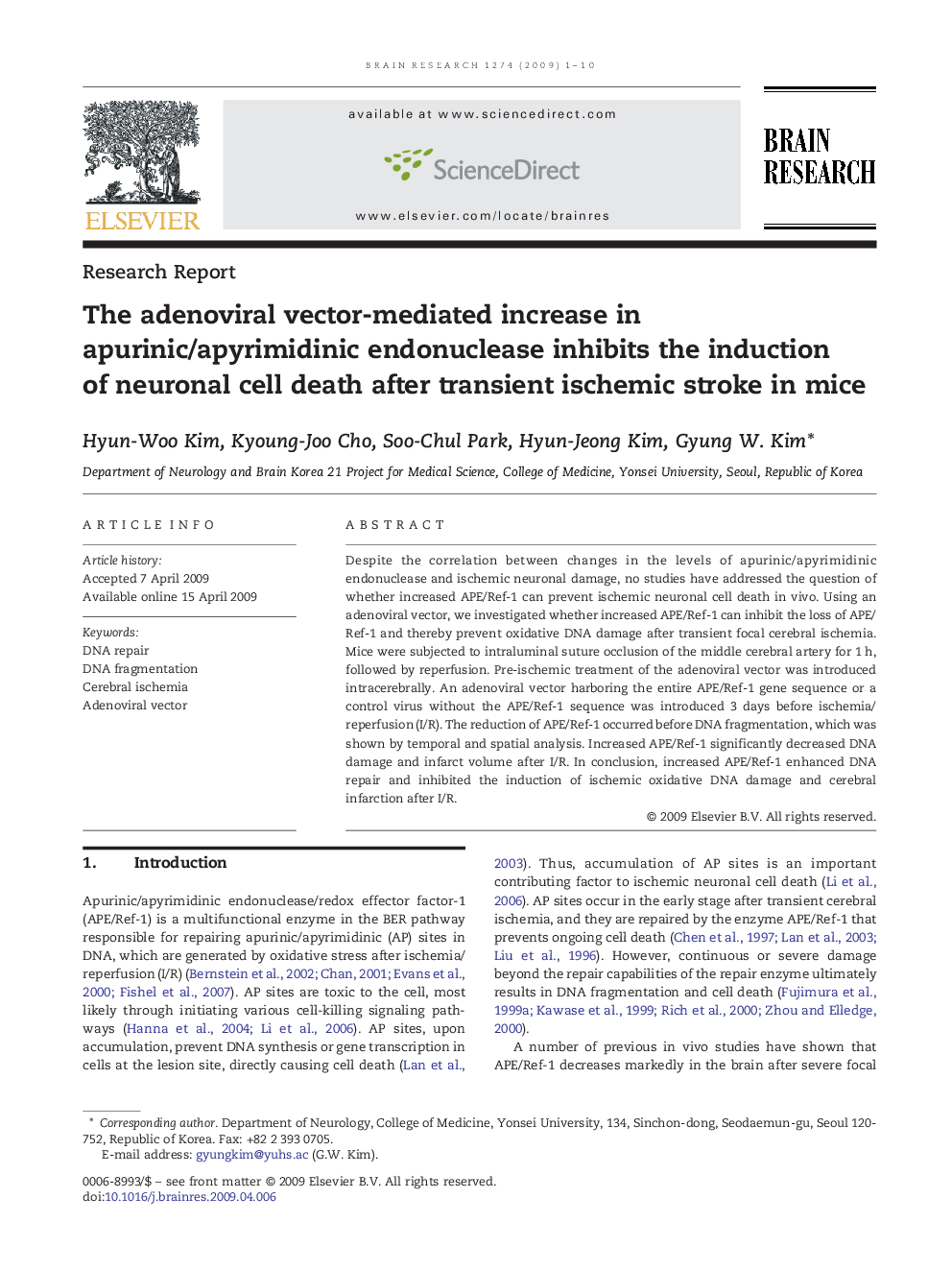| Article ID | Journal | Published Year | Pages | File Type |
|---|---|---|---|---|
| 4328276 | Brain Research | 2009 | 10 Pages |
Despite the correlation between changes in the levels of apurinic/apyrimidinic endonuclease and ischemic neuronal damage, no studies have addressed the question of whether increased APE/Ref-1 can prevent ischemic neuronal cell death in vivo. Using an adenoviral vector, we investigated whether increased APE/Ref-1 can inhibit the loss of APE/Ref-1 and thereby prevent oxidative DNA damage after transient focal cerebral ischemia. Mice were subjected to intraluminal suture occlusion of the middle cerebral artery for 1 h, followed by reperfusion. Pre-ischemic treatment of the adenoviral vector was introduced intracerebrally. An adenoviral vector harboring the entire APE/Ref-1 gene sequence or a control virus without the APE/Ref-1 sequence was introduced 3 days before ischemia/reperfusion (I/R). The reduction of APE/Ref-1 occurred before DNA fragmentation, which was shown by temporal and spatial analysis. Increased APE/Ref-1 significantly decreased DNA damage and infarct volume after I/R. In conclusion, increased APE/Ref-1 enhanced DNA repair and inhibited the induction of ischemic oxidative DNA damage and cerebral infarction after I/R.
